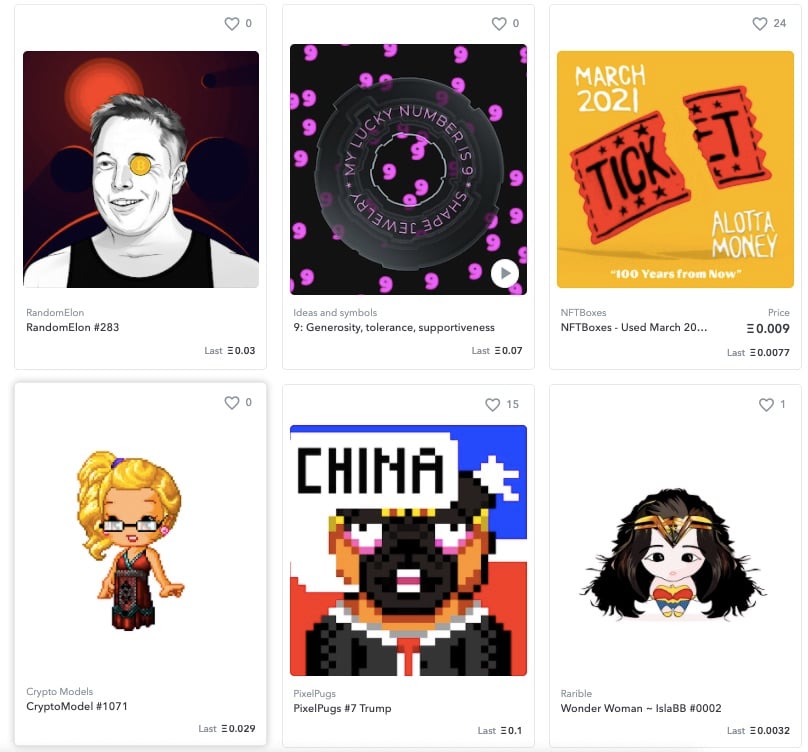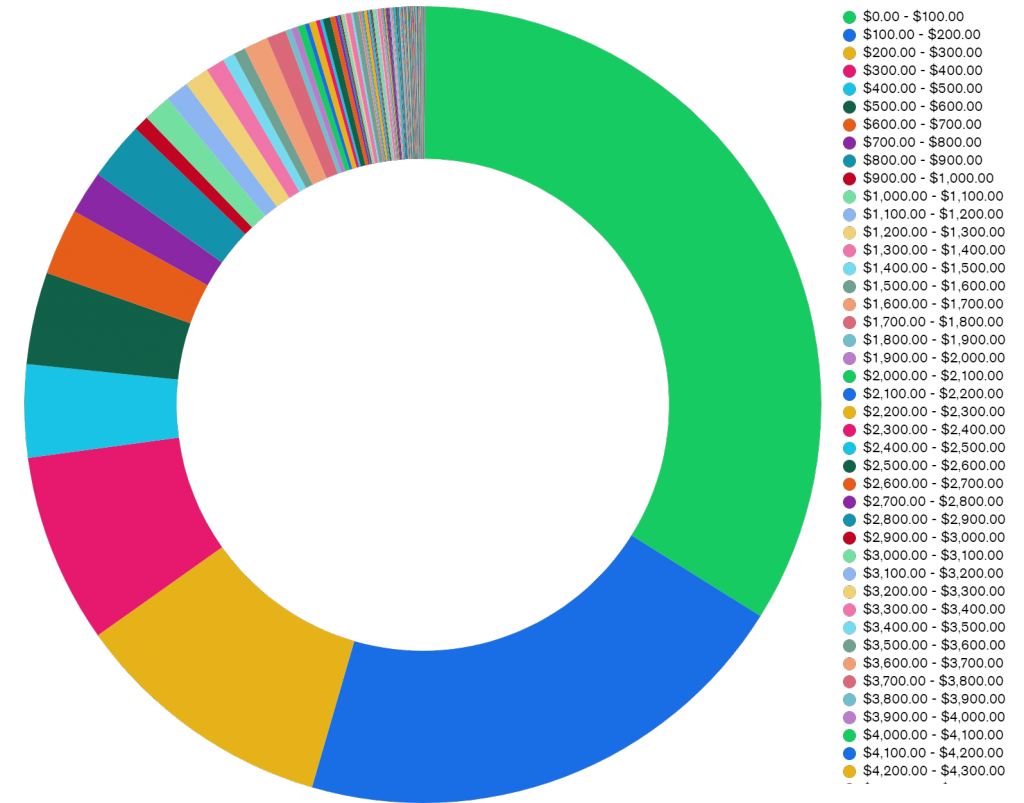Analysis
Think Everyone Is Getting Rich Off NFTs? Most Sales Are Actually $200 or Less, According to One Report
And that's before fees.

And that's before fees.

Eileen Kinsella

A common refrain, amid the ongoing market frenzy surrounding sales of art-related NFTs or non-fungible tokens, has been that they are empowering artists otherwise shut out of the system.
Many are jumping in. Following Christie’s record sale of Everydays—The First 5000 Days, a $69 million NFT by the artist known as Beeple, the response from top artists was enthusiastic. The media is full of stories focusing on overnight successes, like Brooklyn sports painter Blake Jamieson, who recently told CNBC, “I firmly believe that I will be a millionaire in like eight weeks, just because I see the potential of the NFT stuff.”
Artist Kimberly Parker, for one, remains skeptical, and decided to investigate for herself. In a recent, in-depth blog post at Medium, she threw some cold water on the notion that large numbers of artists are cashing in. And she’s got the numbers to back up the assertion. (Parker declined to comment for this article, saying that she preferred to let the data speak for itself.)
The “average sale” price suggested by the most popular NFT sites is “shockingly high,” Parker writes—several thousand dollars. As of this writing, according to rankings on OpenSea, the “average” price of an NFT sold on SuperRare is 2.15 ether or $5,800; the “average” price on MakersPlace is .87 ether or $2,400; and the “average” on Foundation is 1.27 ether or $3,500.
Even after the recent crash in NFT prices, Nonfungible.com reports that average NFT prices overall were around $1,400 in April (down from $4,000 in mid-February).

Screenshot of the rankings at OpenSea as of April 28, 2021, with “Average Price” marked for the NFT marketplaces Rarible, SuperRare, and MakersPlace.
Can the “average” artist be making thousands of dollars per sale? Probably not. As Parker points out, this number is skewed by a handful of enormous sales (e.g. if one artist sold an NFT for $1 million and 99 others sold work for a buck, the “average” would still be over $10,000).
For the ordinary artist considering entering the NFT space, the “median” price is the more relevant measure, Parker argues—the amount an artist who falls in the middle of the distribution might expect to make (e.g. in the example above, it would be $1.)
But this is not data that is easy to come by. So Parker worked with a data expert who scraped data from OpenSea, which describes itself as the “largest marketplace for user-owned digital goods,” and lists items from many other marketplaces. They then analyzed a ten-day period during the peak NFT “gold rush” moment, between March 14 to 24—just after the Beeple sale turned all eyes to NFTs—to come up with a representative slice of data about who was making money.
Parker chose to focus on primary sales, since this “would give a clear idea of what an artist could expect selling their NFT for the first time.” The analysis found that the largest number of primary sales, even during this frothy moment, were for $100 or less. More than 50 percent of all recorded sales were under $200.

Number of Primary Sales at a Given Price (Adjusted for historical price). Courtesy thatkimparker.medium.com.
The overall breakdown, Parker writes, was as follows:
33.6 percent of primary sales were $100 or less
20.0 percent of primary sales were $100-$200
11.1 percent of primary sales were $200-$300
7.7 percent of primary sales were $300-$400
3.9 percent of primary sales were $400–$500
3.3 percent of primary sales were $500-$600
2.5 percent of primary sales were $600–$700
And so on, in tinier and tinier slices, before you even escape the hundreds.
“Most NFT sites will recommend you set your sale price at 0.5 ETH, which was about $894 USD on March 19th,” Parker notes (due to the high volatility of the cryptocurrency, it’s about $1,300 now). “The number of Primary Sales that ended up selling for the recommended price was a whopping 1.8%.”
Still, even if it’s only a $100 sale, that’s $100 more than artists were making before, right?
True—but you still have to take into account that the already paltry returns of the aforementioned primary sales are before fees collected by the platforms. (Parker breaks down the fees of the various spaces in another blog post.)
If your artwork is among the more than 1 in 3 NFTs that sold for $100 or less, Parker explains, “you can expect to have 72.5 percent to 157.5 percent of your sale deducted by fees [depending on the platform]. That’s an average(!) of 100.5 percent, leaving you with a $0.50 deficit or more.”
In other words, NFTs are probably not the path to escape the hustle or to lift up masses of artists. Most can expect to get nickel-and-dimed.